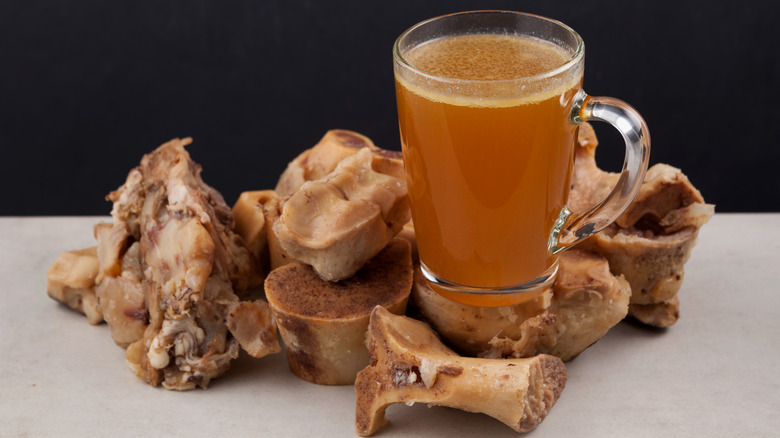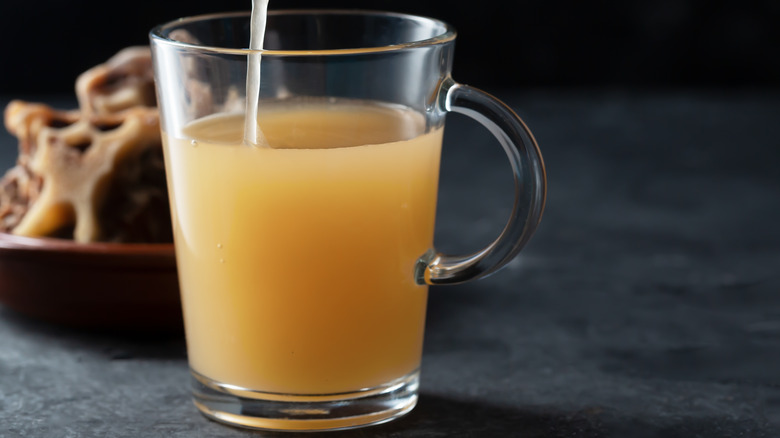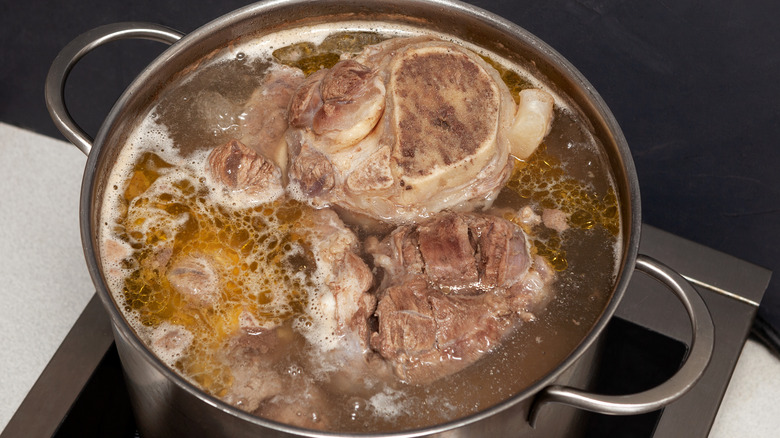Here's Why You Should Always Blanch Your Bones Before Making Bone Broth
We've all seen many superfoods make headlines only to pass out of fashion and slowly fade from our collective consciousness. Occasionally, though, one comes along, and either due to its true health benefits or the simple fact that it is delicious, it stands the test of time. Bone broth appears to fall into this latter category.
While bone broth came back into vogue in the mid-2010s (via Ask the Professionals), it has a history that goes back thousands of years and has passed in and out of style, mainly as part of the culinary arts, several times over the years (via Bare Bones). Almost as long as it has been loved for its flavor, people of many cultures have recognized its health benefits (per BBC Good Food). Chicken soup, a.k.a. 'Jewish Penicillin,' is considered a standard home remedy for a host of ailments (via CBS News).
Creating bone broth can be a little time-consuming, but is well within the realm of almost any home cook with skill enough to turn on an oven or boil water.
How you make bone broth is important
Bone broth can be as simple or as complicated as you choose to prepare it. However, how you make your broth can greatly affect the health benefits its offers, its taste, and its clarity. A paper published in Food Engineering Progress finds that the temperature at which you cook your bones and the amount of time they're allowed to stew has a significant impact on the nature of the finished broth. The research found that bone broths cooked longer at lower heats had higher concentrations of beneficial amino acids and minerals. It also found that the longer a broth was allowed to stew, the clearer it became, and the less gelatinous the finished product was.
If you are short on time (i.e. you don't have 12 hours or more to make your bone broth) you can speed up the process by cooking your bones under pressure. You basically just place your ingredients in a pressure cooker and cook them pressurized at high heat. This process is explained in a YouTube video that has garnered almost 10 million views in the last two years. You should keep in mind, though, that a paper published in KoreaScience tells us that this can result in cloudy broths that have an off taste.
To blanch or not to blanch? The answer is clear
According to Salted Mint, many people sabotage their efforts to make stunning broths before they even start. They recommend that before you roast, much less boil, your bones, you should first blanch them. To accomplish this step, place your bones in a large pot and cover them with cold water. Then bring them to a boil and cook them at a high simmer for around twenty minutes. Once completed, drain them and move on to the roasting phase.
The purpose of blanching is to remove any impurities, such as residual blood, dirt, hair, or other nasty bits that could throw off the taste of your broth. If you have ever drank a cup of broth or tasted a soup made from a broth that had a funky flavor, odds are this step was skipped by the chef.
Bone broth is a delicious way to boost the nutrient levels of soups, stews, sauces, and even drinks (via Healthline). If you have tried it in the past and found it was too much for your taste, do yourself a favor and give it another go. Just make sure it is properly prepared this time.


